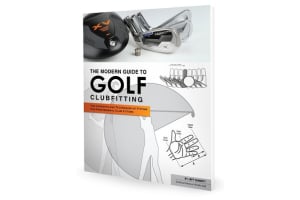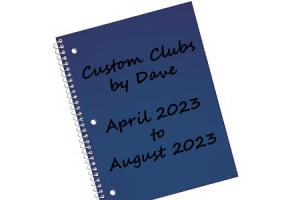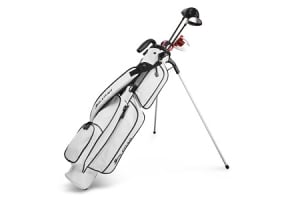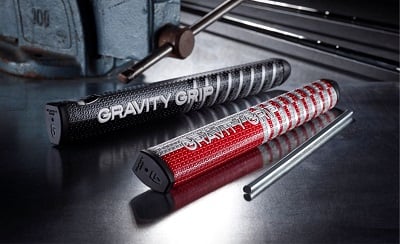
Improve your putting performance with the Gravity Grip, a breakthrough in putter grip technology. Hireko is proud to announce we are a distributor for the Gravity Grip, which features with a soft, textured polyurethane surface with an ultralight EVA (Ethylene Vinyl Acetate) foam body that weighs only 35 grams. It is coupled with a 70-gram steel rod that runs along the entire length of the grip. Unlike a standard putter shaft counterweight which is centrally located within the shaft, the Gravity Grip’s steel rod is offset ½ inch below the shaft’s centerline axis. If you are a putter connoisseur, you might know this technology was first used in Evnroll putters and is now available to clubmakers and repair shops worldwide.
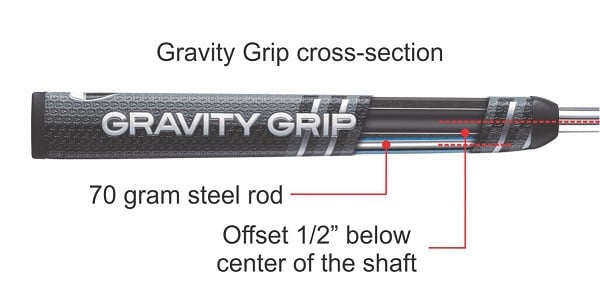
Gravity Grip dimensions
This counterweighted grip measures 11 3/8” long, which is longer than the average length putter grip (10.5”). While there are no standards for putting grip sizing like there are for swing grips, we would classify this as a midsize putter grip. The grip dimensions are 1.03” wide by 1.45” deep and the overall grip weighs 125g.
How does the Gravity Grip work?
According to the manufacturer, the Gravity Putter Grip ties the hands and the putter together to reduce wrist rotation thus keeping the face square.
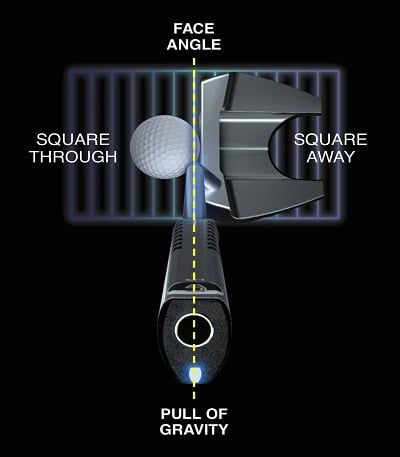
However, inquiring minds wanted to know more. We conducted an experiment where we attached a collet that could be tightened around the butt end of the shaft. It had a rod extending outward where we could attach a weight which would be offset from the center of the shaft. We first needed a baseline. Below is an image of a putter without a grip, however there is a putter counterweight inside the middle of the shaft to simulate the weight of the collet and our weight that we attached. This blade-style putter has a toe hang of approximately 25 degrees or one that would be recommended for a golfer with a slight arcing stroke.
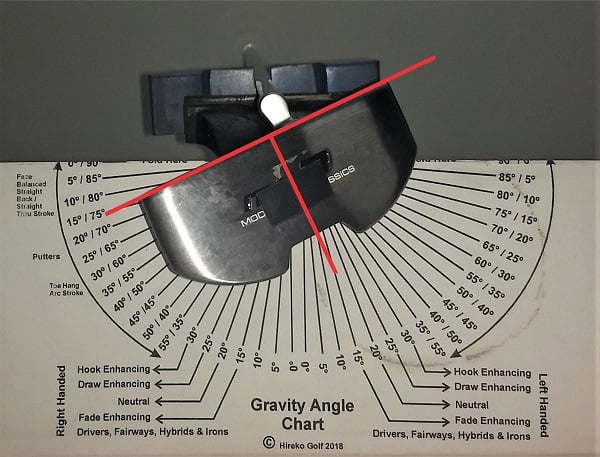
Offsetting weight in a putter grip toward the heel
In the next image, we positioned the collet with the rod pointed toward the heel and attached our weight to simulate the Gravity Grip’s weight distribution. This putter now has a toe hang of approximately 3.5 degrees or nearly a face-balanced putter.
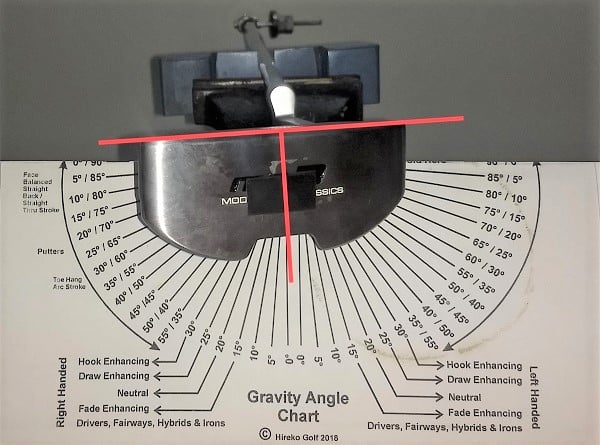
Offsetting weight in a putter grip toward the toe
To show you the contrast, the next image repositions the collet with the rod pointed toward the toe and attached our weight. This putter now has a toe hang of approximately 41 degrees or recommended for someone with more of a pronounced arcing stroke. It should be noted that the Gravity Grip does not alter the toe hang as dramatically as our demonstration. If my notes are correct, the Gravity Grip reduced the toe hang by about 5 degrees on the putter I tested.

What the Gravity Grip appears to do is alter the gravity angle (or putter toe hang) and it is well documented how a putter with a different toe hang can complement the path and affect performance. Since most golfers tend to push their putts, it makes sense that the weight be offset toward the heel. Replacing a perfectly good putter is expensive, but regripping with a Gravity Grip may provide instant performance benefits by shaving strokes for many golfers at a fraction of the cost.


